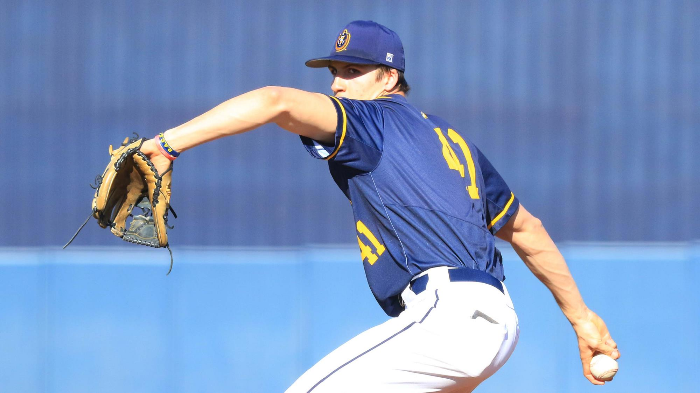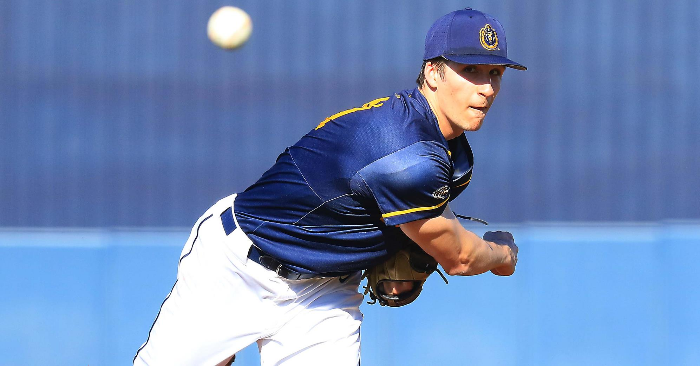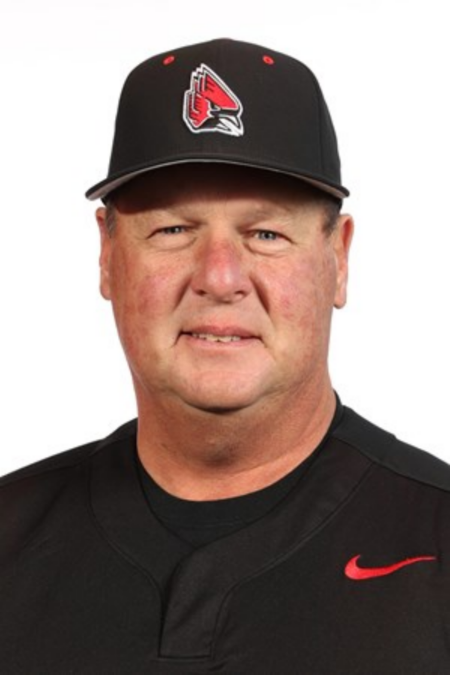
BY STEVE KRAH
Hayden Wynja’s career as a baseball pitcher has not gone in a straight line.
In fact, the lanky left-hander looked to be at the end of the line on more than one occasion.
But Wynja persisted through rough patches and finds himself preparing for his third year in the pros with the San Francisco Giants organization.
“All I ever wanted to do was play professional baseball,” says Wynja, 25. “It’s been a crazy, crazy, crazy journey. But it’s been a lot of fun.
“I’m very blessed. That’s for sure.”
A 2017 graduate of Heritage Christian High School in Indianapolis who helped the Dan Ambrose-coached Eagles win three IHSAA sectional titles was selected in the 30th round of the 2017 Major League Baseball First-Year Player Draft by the Atlanta Braves but did not sign.
Wynja (pronounced Win-Yuh) red-shirted in his first year at Purdue University (2018) then hurled 11 2/3 innings over eight outings for the Boilermakers in 2019.
“I essentially got cut,” says Wynja.
During the COVID-19-shortened season of 2020, Wynja got into five games and logged 13 1/3 innings at Lincoln Trail College in Robinson, Ill.
At the University of South Florida in Tampa in 2021, the lefty pitched in just two games and two innings.
“I kind of got cut again.” says Wynja.
One of his USF teammates was catcher Jake Sullivan, son of Florida Baseball ARMory founder Randy Sullivan in Lakeland.
“I gave everything to the ARMory,” says Wynja who landed at Murray (Ky.) State University. “Murray State and the Florida Baseball ARMory are why I’m still playing baseball.”
With the Dan Skirka-coached MSU Racers, Wynja earned the Friday night starter job in 2022. He took the mound 15 times (14 starts) and went 6-4 with a 3.67 ERA, 86 strikeouts and 24 walks in 73 2/3 innings
Last off-season, Wynja wrote the 70-page paper he needed to complete a Communications degree from Murray State.
Signed by the Giants as a minor league free agent July 28, 2022, Wynja pitched in three contests and 3 1/3 innings for the the Orange team in the Arizona Complex League that season.
In 2023 with the Low Class-A San Jose (Calif.) Giants and Advanced-A Eugene (Ore.) Emeralds, Wynja made 29 mound appearances (16 starts) and went 7-6 with two saves, a 4.16 earned run average, 115 strikeouts and 38 walks in 97 1/3 innings. He fanned batters at a rate of 10.6 per nine innings.
He then chosen to take part in the Arizona Fall League.
“It was a super honor,” says Wynja, who worked in five games and went 1-0 with a 7.20 ERA, 16 strikeouts and nine walks in 10 innings. His K-per-9 rate with the Scottsdale Scorpions was 14.4.
Throwing from a high three-quarter arm angle, Wynja delivers a four-seam fastball that traveled at 90 to 94 mph and a hard slider that went 81 to 84 mph.
“That’s my swing-and-miss pitch,” says Wynja. “I’ve had a couple of hitters call it the ‘ghost ball.’ — you can’t quite see the spin.
“I execute my slider really well. I haven’t developed nearly what I will be. I’m not a polished product. I don’t go into outings trying to strike out guys ever. But I try to attack and get ahead in the count. My thought process is when it gets to 1-2 or 0-2, they’re mine every time. I have that much trust in my slider.
“I put people away quick.”
In 2023, he threw his change-up 4 percent of the time and is now working toward 15-percent usage.
It was also in the AFL that Wynja began diving into his release point.
At 8 feet, 2 inches his extension is one of the longest in baseball.
Wynja joined an exclusive club on May 13, 2023 when he threw an immaculate inning (nine pitches and nine strikes) against Lake Elsinore.
“That was crazy,” says Wynja. “That’s one of those things you never think about having.”
Beginning the season as San Jose’s closer, Wynja was moved to the starting rotation and it was in the final inning of one of his first starts that he went immaculate.
San Jose pitching coach Dan Runzler told Wynja to empty the tank and that’s what he did.
The goal-oriented Wynja only held one job before joining the Giants and that was as grocery store bagger for a few months in his early teens. As a minor leaguer he does not make lots of cash, but he manages and uses Airbnb while traveling to train.
“I’m getting paid for pitching,” says Wynja. “It’s hard to complain.”
One of Wynja’s goal this off-season is to put on some pounds.
The 6-foot-9 southpaw is currently tips the scales at 218 (up from 205 at season’s end).
“The idea is to get to up to 220 to 225,” says Wynja. “I heard that’s where (6-foot-10 Hall of Famer and lefty) Randy Johnson sat at.
“Putting on weight does a couple of things for me. It’ll provide me a lot of consistency with my delivery. I’ll stay strong and it’ll help my velo increase. As my weight goes up I’ll become a better pitcher.”
Wynja returned to Indianapolis in mid-November. After a couple weeks of rest, he trained at PRP Baseball in Noblesville, Ind., during the week with some weekend workouts at RoundTripper Sports Academy in Westfield, Ind. He started his throwing progression a couple of weeks ago.
“It’s great to be from Indiana and play baseball,” says Wynja. “We have a lot of resources.”
At PRP, Wynja got to observe and talk with big leaguers Tim Herrin and Bryan Hoeing. Both 6-foot-6, lefty Herrin is a Terre Haute (Ind.) South Vigo High School graduate and former Indiana University hurler now with the Cleveland Guardians and righty Hoeing is a Batesville (Ind.) High School alum who shined at the University of Louisville and is now with the Miami Marlins.
The day after Christmas, Wynja hit the road. The plan was to see his girlfriend in Atlanta and fly to New York to spend time with family while celebrating father Brad Wynja’s birthday (Hayden is the oldest sibling of two blended families and has a sister — Bella Wynja — who plays volleyball at Mercer University in Macon, Ga.).
After vacation, Wynja goes back to Atlanta and then heads to the Florida Baseball ARMory — something he did last winter — to ramp up for spring training in Scottsdale.
“I’ll be around a whole new set of big leaguers,” says Wynja. Among those is Seattle Mariners 6-foot-6 right-hander Logan Gilbert. “When I’m a big leaguer I hope to look like (Gilbert). We have similar builds. We move similar. We think about pitching in similar ways. I could pick his brain for hours and hours and hours.
“(FBA gives me a) great environment for me to buy in and really improve. I want to learn how big leaguers train in the off-season — how they eat, sleep, recover. I know I have one shot at this. I’m going to emulate these guys who are super-successful.
“You want to surround yourself with who you want to be or where you’re trying to go.”















